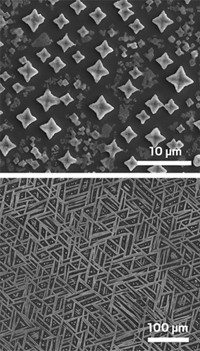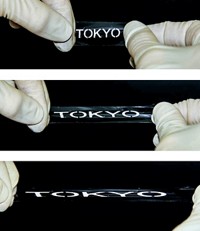Advertisement
Grab your lab coat. Let's get started
Welcome!
Welcome!
Create an account below to get 6 C&EN articles per month, receive newsletters and more - all free.
It seems this is your first time logging in online. Please enter the following information to continue.
As an ACS member you automatically get access to this site. All we need is few more details to create your reading experience.
Not you? Sign in with a different account.
Not you? Sign in with a different account.
ERROR 1
ERROR 1
ERROR 2
ERROR 2
ERROR 2
ERROR 2
ERROR 2
Password and Confirm password must match.
If you have an ACS member number, please enter it here so we can link this account to your membership. (optional)
ERROR 2
ACS values your privacy. By submitting your information, you are gaining access to C&EN and subscribing to our weekly newsletter. We use the information you provide to make your reading experience better, and we will never sell your data to third party members.
Materials
Cycloaddition Suppresses Nanotube Conductivity
Adding a fluoroolefin to metallic single-walled carbon nanotubes helps tame them for electronics applications
by Bethany Halford
January 12, 2009
| A version of this story appeared in
Volume 87, Issue 2
Using a chemical transformation, researchers at DuPont and Cornell University have devised a way to sap metallic single-walled carbon nanotubes (SWNTs) of their conductivity while leaving semiconducting SWNTs unscathed (Science 2009, 323, 234). SWNTs are always produced as a mixture of metallic and semiconducting tubes. Although the semiconducting tubes are promising transistor materials, the metallic tubes short-circuit such devices. The new technique allows scientists to transform bulk quantities of commercial SWNT mats into a material with properties that are suitable for device applications. No tedious separation of the metallic and semiconducting tubes is required. The process, whose development was spearheaded by DuPont's Graciela B. Blanchet, employs a [2+2] cycloaddition of the metallic tubes and a bulky fluorinated olefin. Adding the fluoroolefin to the nanotubes disrupts their π bonding system and thus their conductivity. The fluoroolefins react preferentially with the metallic SWNTs, so by carefully controlling the olefin concentration, the researchers can selectively alter the metallic tubes while leaving the semiconducting tubes unaffected. "This method could offer a viable path for the use of semiconducting carbon nanotubes in commercial electronic devices," according to the researchers.





Join the conversation
Contact the reporter
Submit a Letter to the Editor for publication
Engage with us on Twitter